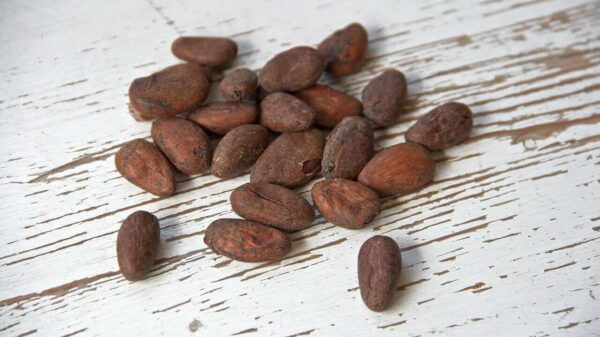Cocoa prices experienced a notable surge today, with March ICE NY cocoa rising by $430 or 8.44%, while December ICE London cocoa increased by $171 or 4.52%. This upward momentum comes as the dollar index fell to a 1.5-week low, prompting short-covering among traders in cocoa futures. Additionally, declining cocoa inventories monitored by ICE have contributed to the price rally, with stocks held at U.S. ports dropping to an 8.5-month low of 1,709,185 bags.
The latest data reveals that funds have adopted a significantly short position in London cocoa. According to the weekly Commitment of Traders report released last Friday, funds increased their net-short position by 3,737, bringing the total to 22,748 net-short positions—the highest level observed in over four years. Such a heavily shorted market could amplify the effects of any short-covering rally.
Despite the price gains, the overall outlook for cocoa remains cautious due to expectations of a robust global supply. Reports from cocoa farmers in the Ivory Coast indicate favorable conditions, with the cocoa trees thriving and recent dry weather aiding the harvesting process. Meanwhile, farmers in Ghana report that the climate is conducive to the rapid development of cocoa pods. Chocolate manufacturer Mondelez noted that the latest cocoa pod count in West Africa is 7% above the five-year average and significantly higher than last year’s figures.
The commencement of the main crop harvest in the Ivory Coast has also generated optimism among farmers regarding the quality of the cocoa. Nonetheless, cocoa prices are facing additional pressure following the European Parliament’s decision to approve a one-year delay on the deforestation law, which may keep cocoa supplies abundant. The European Union’s regulation, known as EUDR, aims to address deforestation in countries exporting key commodities such as cocoa and soybeans to the EU.
Another factor influencing cocoa prices is the impact of tariffs. The Trump administration’s announcement on November 14 to eliminate reciprocal tariffs on commodities not grown in the United States, including cocoa, has further complicated the market dynamics. Brazil, a major cocoa-producing country, is among the beneficiaries of this policy change.
Data from the Ivory Coast’s government indicates that cocoa shipments to ports from farmers totalled 618,899 MT in the current marketing year, down by 3.7% from 642,500 MT during the same period last year. The Ivory Coast remains the world’s largest cocoa producer, and these reduced arrivals support cocoa prices.
On the demand side, global cocoa consumption appears to be weakening. CEO of chocolate manufacturer Hershey reported on October 30, 2023, that chocolate sales during the Halloween season were “disappointing.” Halloween typically accounts for nearly 18% of annual candy sales in the United States, second only to Christmas. Similarly, the Cocoa Association of Asia reported a 17% year-on-year decline in Q3 cocoa grindings, marking the lowest third-quarter levels in nearly a decade.
In Europe, cocoa grindings also fell, with the European Cocoa Association reporting a 4.8% year-on-year drop to 337,353 MT, the lowest for a third quarter in ten years. Conversely, North America experienced a slight increase in cocoa grindings, with a reported rise of 3.2% year-on-year to 112,784 MT. However, this increase may be skewed due to the addition of new reporting companies.
A potential stabilizing factor for cocoa prices is the projected decline in production from Nigeria, the fifth-largest cocoa producer globally. The country’s Cocoa Association anticipates an 11% year-on-year decrease in production for the 2025/26 crop year, estimating 305,000 MT, down from 344,000 MT for the 2024/25 season. Reports indicate that Nigeria’s cocoa exports remained unchanged in September at 14,511 MT.
The International Cocoa Organization (ICCO) has revised its estimates for the global cocoa deficit in the 2023/24 season to 494,000 MT, the largest deficit in over sixty years. The ICCO noted a 13.1% year-on-year decrease in cocoa production, bringing the total to 4.380 MMT. Furthermore, the global cocoa stocks-to-grindings ratio has reached a 46-year low of 27.0%. Looking ahead to the 2024/25 season, the ICCO forecasts a global surplus of 142,000 MT, marking the first surplus in four years, alongside a projected production increase of 7.8% year-on-year to 4.84 MMT.
As the market navigates these complex dynamics, the interplay of supply, demand, and regulatory changes will continue to shape cocoa prices in the coming months.








































































